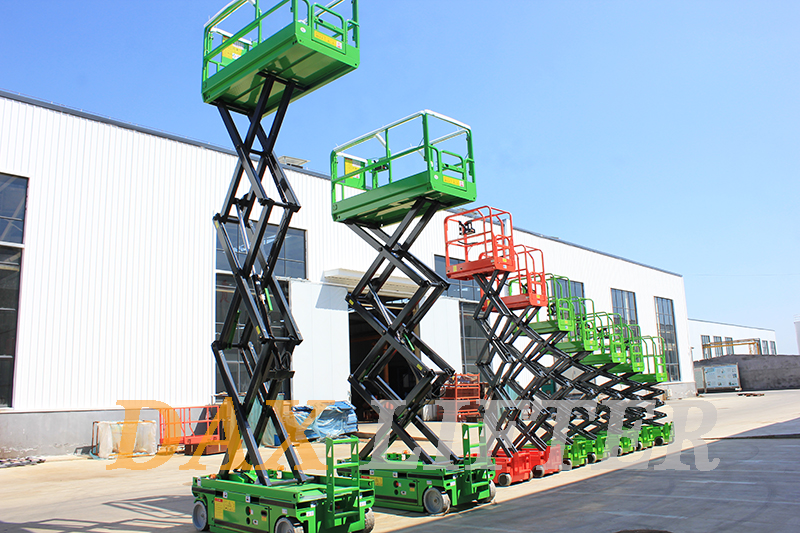Scissor lifts are a type of aerial work platform commonly used for maintenance applications in buildings and facilities. They are designed to lift workers and their tools to heights ranging from 5m (16ft) to 16m (52ft). Scissor lifts are typically self-propelled, and their name comes from the design of their lifting mechanism—stacked, crossed tubes that work in a scissor-like motion as the platform raises and lowers.
One of the most common types of scissor lifts found in rental fleets and worksites today is the electric scissor lift, with an average platform height of 8m (26ft). For instance, the DX08 model from DAXLIFTER is a popular option. Depending on their design and intended use, scissor lifts are classified into two main types: slab scissor lifts and rough terrain scissor lifts.
Slab scissor lifts are compact machines with solid, non-marking tires, ideal for use on concrete surfaces. In contrast, rough terrain scissor lifts, powered by either batteries or engines, are equipped with off-road tires, offering high ground clearance and the ability to cross obstacles. These lifts can easily handle muddy or sloping terrains with a climbing grade of up to 25%.
Why choose a scissor lift?
- High working platform and overhead space: The DX series slab scissor lifts feature a non-slip platform and an extension table that extends up to 0.9m.
- Strong driving and climbing capabilities: With a climbing ability of up to 25%, these lifts are suitable for various worksites. Their driving speed of 3.5km/h boosts work efficiency.
- High efficiency for repetitive tasks: The intelligent control system allows operators to easily drive between tasks, increasing productivity.
- Adaptability to different work conditions: The electric model is suitable for both indoor and outdoor use due to its low noise and zero emissions, which are important for certain environments.
Post time: Oct-19-2024

